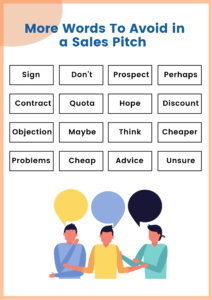Sales Strategy: A Goal-Setting Guide
If you’re a sales manager or leading a team of salespeople, the most critical metric is the sales goals.And the best way you can serve your organization is by increasing the sales and revenue of the company.To increase the sales of your organization, you need to set and achieve sales goals repetitively – every week, month, quarter, year, and decade.
In this guide, we will understand how you can set sales goals and what sales goals should be meaningful to you and your sales team.
How to Set Sales Goals
Sales goals are the means to achieve where you want to go. If you’re currently at A and you want to reach B, sales goals will take you there. The best way to set any sales goal is to use a framework that works, i.e. SMART.
To ensure that you achieve any sales goal that you set, you need to set a goal that is –
S – Specific
M – Measurable
A – Attainable
R – Relevant
T – Time-bound
Let’s take an example to illustrate this.
Let’s say that your organization is currently at $10 million in quarterly sales. You want to reach $20 million in the next quarter.
Is it a SMART goal?
- Is it specific – Yes
- Can it be measured (in quantity) – Yes, exactly double of what your organization achieved this quarter
- Is it attainable – Yes, it’s a stretch goal, but doable
- Is it relevant – Yes, the metric and the context are relevant since you’re aiming at the same goal, just better numbers
- Is it time-bound – Yes, your deadline is the next quarter
If you follow the SMART goal while setting any sales goal, your chances of achieving that goal increases.
Here’s why –
You gain clarity. And you know exactly what to do.
Sales Goal Examples – Simple & Advanced
Now, let’s look at some sales goal examples that you can implement in your business.
Some of these you may never think of since they’re so obvious. And others are a little advanced.
Number of Units Sold Per Sales Rep Per Month
If every sales rep improves the number in your team, the overall number would improve as well.
If the number of units sold per sales rep per month is 10 units [10 units * 10 sales reps = 100 units per month].
If you set a sales goal of making that number 15 the next month and you have ten sales reps, the overall number would improve by 50 units [15 units * 10 sales reps = 150 units per month].
It’s a 50% increase in sales for your organization.
Monthly Recurring Revenue (MRR)
This is how much your team produces month by month in terms of revenue.
Let’s say that your remote sales team generates $100,000 per month for the last quarter. Your goal should be to increase the monthly recurring revenue by 5%, 10%, 20% whatever seems SMART to you.
To encourage your sales rep, you can create a commission system designed to reinforce more MRR month after month –
If you (every sales rep) achieve the monthly target, you will achieve a 30% commission; if you don’t, you will achieve a 10% commission.
Customer Acquisition Cost (CAC)
The target should be to reduce your CAC to a minimum.
Customer acquisition cost includes –
- Salaries and commission paid to your sales reps
- The fees for the marketing & automation tools you use
- Promotional expenses for lead generation
- Calling costs, costs of the net recharge, etc.
Add all of the above and you get the total cost of customer acquisition.
Now, divide the total cost of customer acquisition by the number of customers you acquired during the period.
And you get customer acquisition cost (CAC).
If you have invested $1000 this month to acquire 4 customers, your CAC is $250 per customer.
The goal should be to reduce the CAC and still gain the same or more customers.
Qualified Leads
If you have an organization that separates the marketing & sales teams, then the job of the marketing team is to generate leads for you.
The sales team then qualifies and closes the deals.
Let’s say that the goal of your marketing team is to generate 100 leads per month with certain qualifications and a set qualification score* [let’s say 60%]
The goal of your sales team would be to turn a certain percentage of leads into customers. The percentage can be 10%, 20%, or more.
* Note: Qualification score means the percentage of characteristics that match your ideal target customer.
Sales Cycle
The sales cycle is measured in time.
Let’s say that the marketing team generates 100 leads on 31st January.
And the sales team turns those leads into paying customers (10% of the leads) by 21st February.
It means the sales cycle is 21 days.
The goal of every sales team is to reduce this interim period.
The shorter the sales cycle is, the more effective the sales processes are.
Sales Activity & Ratio of Every Sales Rep
If you’re a sales manager or a team lead, your job is to track the activities of every sales rep.
Here are the activities you should track –
- Number of sales calls
- Number of customer visits
- Number of a demo presentations
- Number of closing
If you track these every week, every month, and every year, your sales rep will improve.
You can also introduce an affordable tool like GetRafiki to improve their sales calls, make them effective sales reps, and close more sales.
Plus, you can ask your sales reps to improve the ratio of the activities.
For example, if your sales rep X makes 20 calls every day generates 5 customer visits, 3 demo presentations, and closes 1 sale each week – the ratio of your sales rep is 20:5:3:1.
It means that to generate one deal per week, X needs to make at least 20 calls.
You, as a team leader, should encourage your sales reps to improve the ratio so that with the same number of calls, they can close more deals.
Wrapping Up
Since every business is unique and has varied scope, your job as a sales manager is to set sales goals that are relevant to your business.
MRR may not be very relevant to you if your business sells a few products a year. You may then opt for the sales goal of shortening the sales cycle.
The idea is to choose the metrics that help you succeed.
It is not to multiply the complexity, but to gain more clarity, you should set sales goals.
We’ve shared a few examples. Choose the ones that seem relevant to you.
And if you follow the SMART approach in setting your sales goals, you will achieve more, make more money, and create more impact.




